Cutting-edge technologies
HCT Correction
Temperature Compensation
Unique Formulation
Unique Algorithm
Auto-Coding
Accurate Results

Advanced features


8 electrodes


No coding
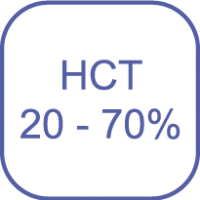

Can test neonates, pregnant women, anemia people etc.


Wide operating temperature
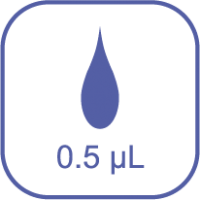

0.5 pL blood sample


5s testing time


Insufficient sample detection


Strip ejector


900-test memory


Meal markers


Hypo warning


5 test alarms
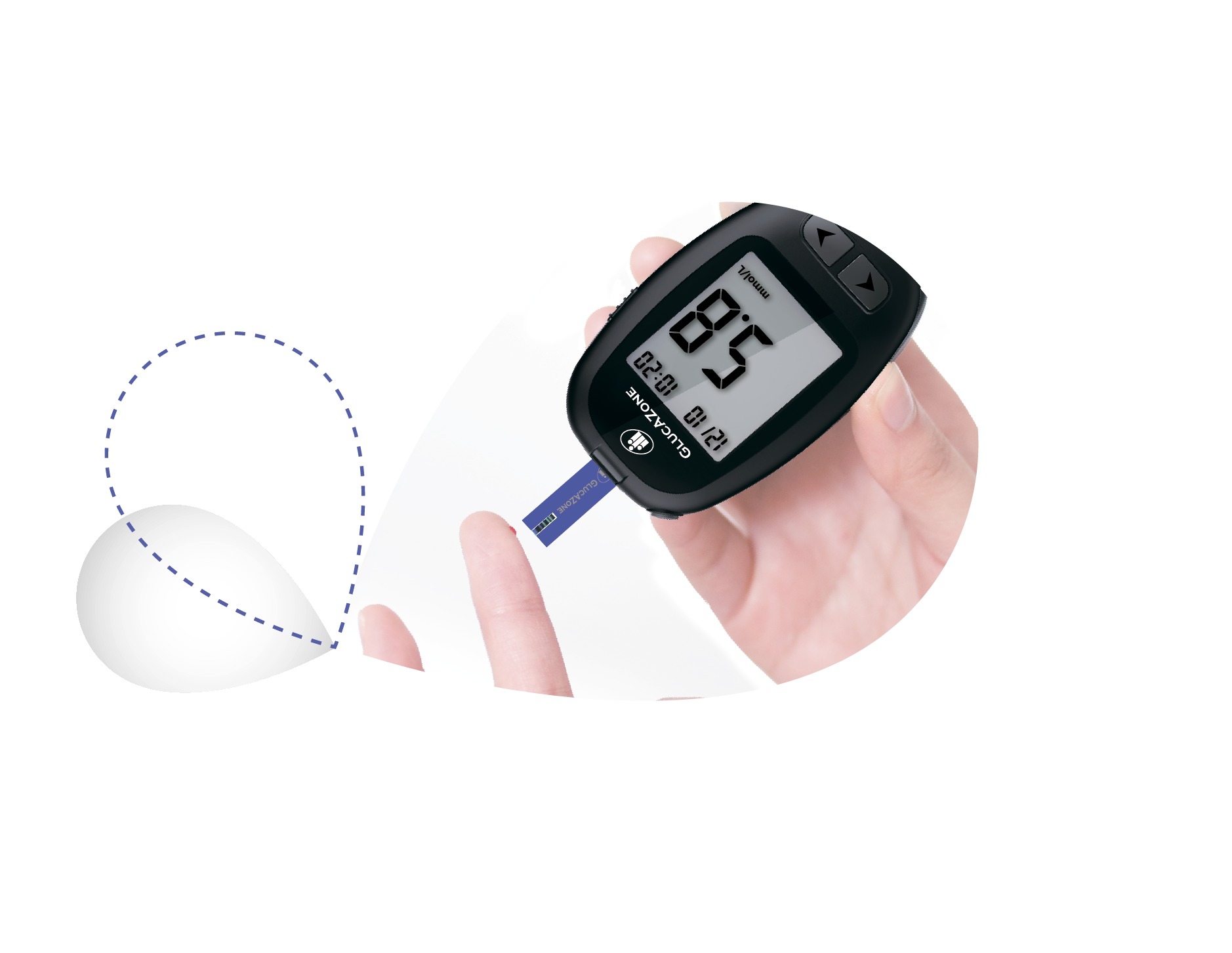
Specification
Advanced 8 electrodes
The 8 electrodes on the GLUCAZONE test strips work with the GLUCAZONE meter to deliver highly accurate results. Detailed functions of those electrodes are:
- Code calibration (auto-coding)
- Eliminating hematocrit interference
- Eliminating temperature interference
- Checking humidity exposure
- Checking if the sample is sufficient
- Checking if the sample is blood or control solution
- Checking for possible damage of the test strip
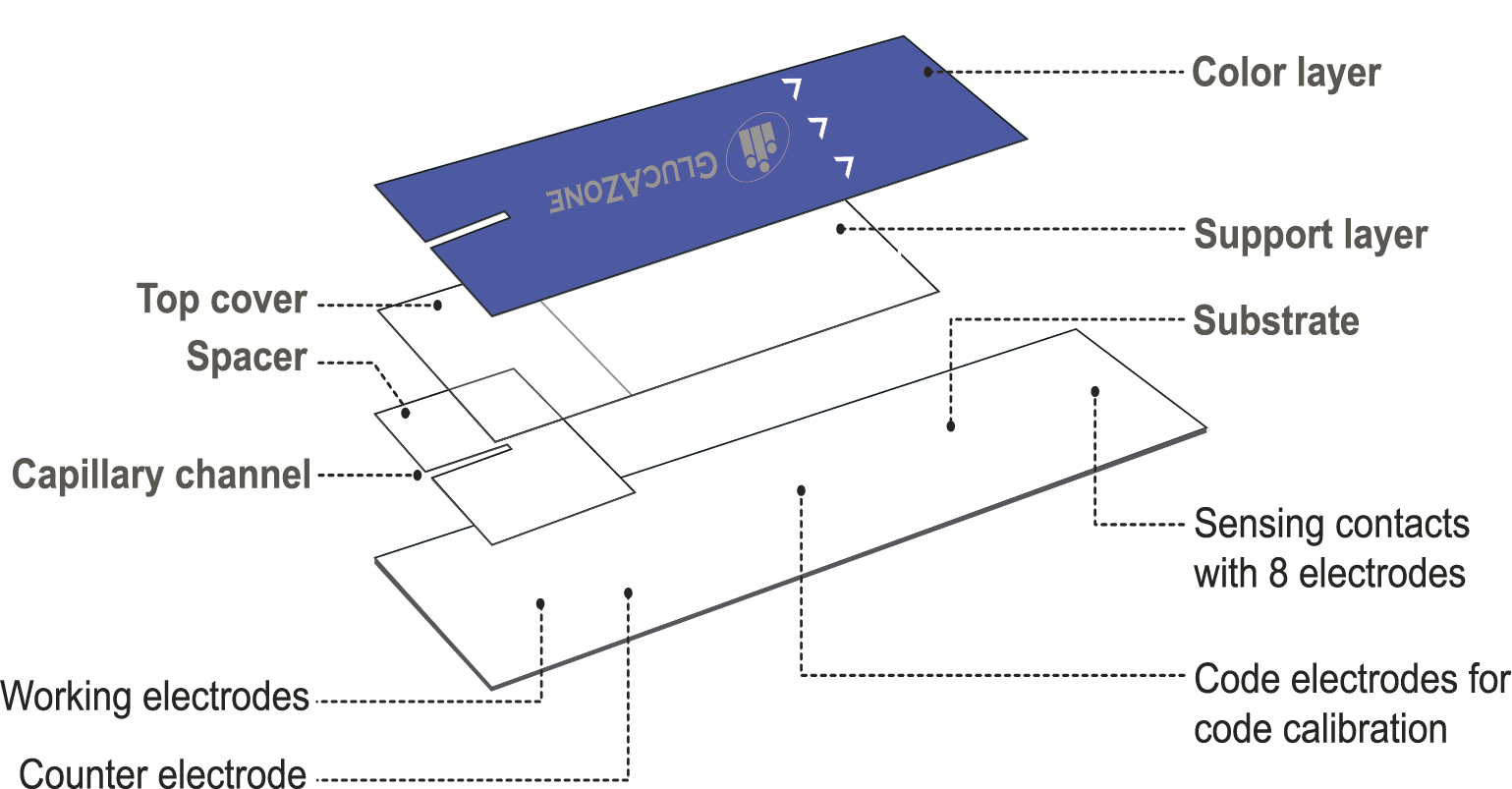
A recent independent clinical study conducted by IDK Germany* shows that 98.8% of all results from GLUCAZONE blood glucose monitoring system are within ±15% or 15 mg/dL (0.83 mmol/L) of the YSI plasma results, which is fully complying with the new EN ISo15197:2015 standard.
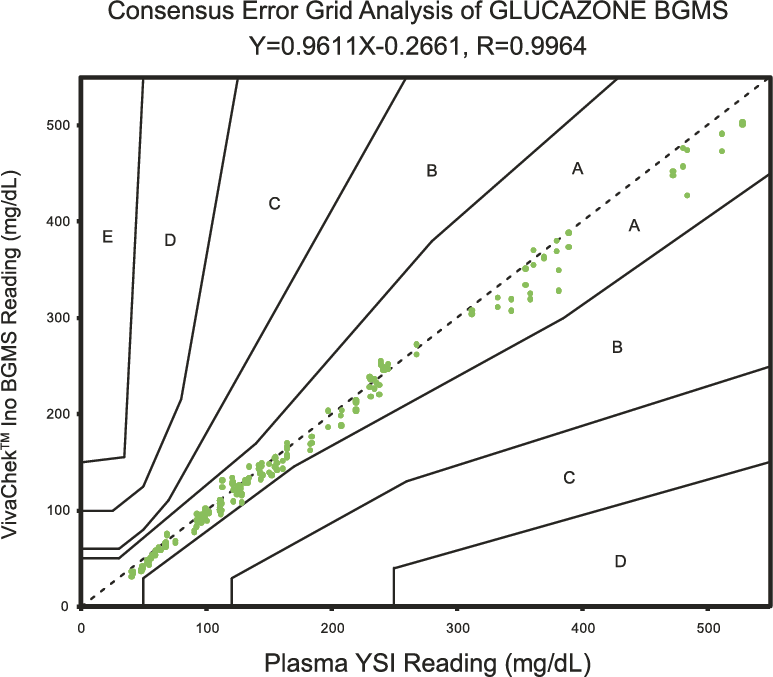
| Risk level (CEG zone) | Risk to diabetic patient |
| A | No effect on clinic action |
| B | Altered clinical action-little or no effect on clinical outcome |
| C | Altered clinical action-likely to effect clinical outcome |
| D | Altered clinical actlon-could have significant medical risk |
| E | Altered clinical action-could have dangerous consequences |
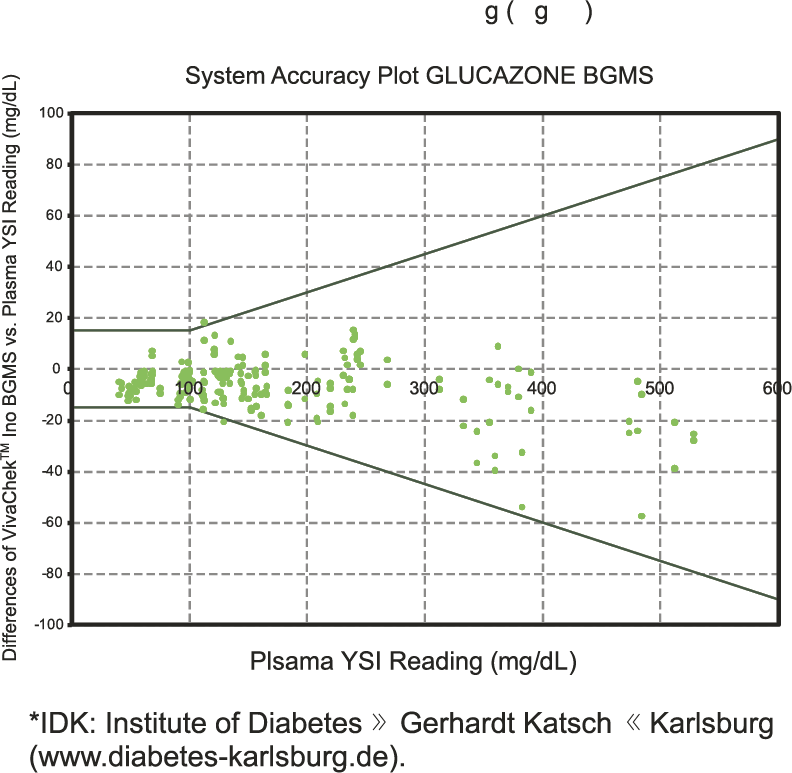
System accuracy results for glucose concerntration
<5.55 mmol/L (100 mg/dL)
Within ± 0.28 mmol/L (5 mg/dL) 78/186 (41.9%)
Within ± 0.56 mmol/L (10 mg/dL) 148/186 (79.6%)
Within ± 0.83 mmol/L (15 mg/dL) 185/186 (99.5%)
System accuracy results for glucose concerntration
* 5.55 mmol/L (100 mg/dL)
Within ± 5% 233/414 (56.3%)
Within ± 10% 360/414 (87.0%)
Within ± 15% 408/414 (98.6%)
System accuracy results for glucose concerntration
between 2.28 mmol/L (40.9 mg/dL)
and 29.4 mmol/L (528.3 mg/dL)
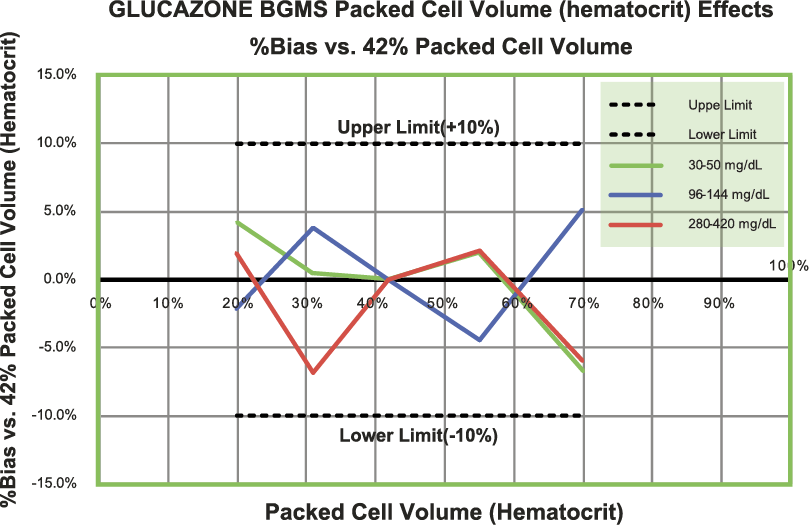
Over and under estimation of glucose due to the hematocrit effect is a common source of error. Anemia falsely elevates while polycythemia and dehydration falsely depresses blood glucose values. The magnitude of this effect may vary by 4-30% for every 10% change in hematocrit, depending on the systems1.’2,3 According to the WHO, anemia affects about 24.8% of the population in the world, about 47.4% of pre-school children and 41.8% of pregnant women worldwide.
With the advanced Hematocrit Correction technology, the GLUCAZONE blood glucose monitoring system could be used for testing patients with hematocrit level within 20-70%, including neonates with very high hematocrit level, as well as anemia people and pregnant women with very low hematocrit level.


